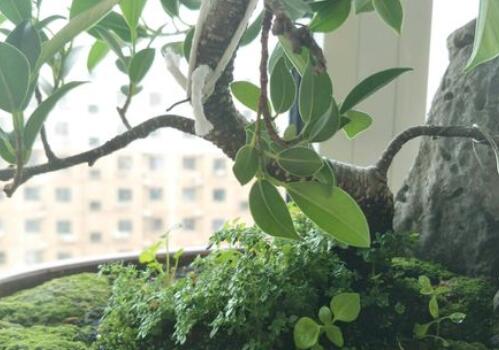How to plant Nim Zi (Myrtle)? How many years does it usually take to get results? How many jin per mu?
Nim Zi, is Myrtle, alias: Nim Zi, Gangzu, 1-2 meters high. Most of them are wild. Beautiful flowers, can be used as garden flowers and trees. So how do you plant it? How many years does it usually take to get results? How many jin per mu?

How many years does it take to plant fertile seeds? The florescence is very long, from April to September, blooming and fruiting at the same time.
Planting method
Seed propagation
Before sowing, we should first select the seeds. Whether the seeds are good or not is directly related to the success of sowing.
It is best to choose the seeds harvested in the same year. The longer the seed is preserved, the lower the germination rate is. Choose seeds with full grains, no defects or deformities, and no diseases and insect pests. Families usually soak the seeds in hot water for about 60 ℃ for a quarter of an hour, and then use warm hot water to accelerate germination for 12 to 24 hours. The best way to disinfect the substrate used for sowing is to stir-fry it in a pan so that any diseases and insects can be scalded to death. Soak the seeds in warm hot water (the temperature is about the same as facial wash) for 12 to 24 hours until the seeds absorb water and expand. For common seeds that germinate easily, this work does not have to be done. For small seeds that are difficult to pick up with hands or other tools, wet one end of the toothpick with water, stick the seeds one by one on the surface of the matrix, cover the substrate 1 cm thick, and then put the seeding flowerpot into the water. the depth of the water is 1 foot 2 feet 2 tap 3 of the height of the flowerpot, allowing the water to soak up slowly (this method is called "pot immersion"). For larger seeds that can be picked up by hand or other tools, put the seeds directly into the substrate and order them at a distance of 3 × 5 cm.
After sowing, the substrate was covered, and the thickness of the cover was 2-3 times that of the seed. After sowing, the sowing matrix can be wet with sprayers and fine-hole showers, and later, when the pot soil is slightly dry, we should still pay attention to watering so as not to wash up the seeds; after sowing in late autumn, early spring or winter, when you encounter a cold wave and low temperature, you can wrap the flowerpot with plastic film to keep warm and wet. After the seedlings are unearthed, uncover the film in time and let the seedlings be exposed to the sun before 9:30 in the morning or after 3:30 in the afternoon, otherwise the seedlings will grow.
It has to be very weak; after most of the seeds come out, they need to plant seedlings properly: pull out the diseased and unhealthy seedlings, so that the seedlings left behind have a certain space between each other; when most of the seedlings have three or more leaves, they can be transplanted.
Cuttage propagation
When the tender wood cuttings were carried out, the sturdy branches of the current year were selected as cuttings when the plants were growing vigorously from the end of spring to early autumn. After cutting off the branches, select the sturdy parts and cut them into segments 5-15 cm long, each with more than 3 leaf nodes. When cutting cuttings, it should be noted that the upper cut is cut flat at about 1 cm above the uppermost leaf node, and the lower cut is about 0.5 cm below the lowest leaf node, and the upper and lower cut should be flat (knife should be sharp). When hardwood cuttings are carried out, the robust branches are selected as cuttings after the temperature rises in early spring. Each cuttage usually retains 3-4 nodes, and the cutting method is the same as that of softwood cuttings.
Field management
Humidity: Myrtle likes the humid climate, which requires that the relative air temperature of the growing environment is 70-80%, the air relative humidity is too low, the lower leaves are yellowed and shedding, and the upper leaves are not glossy.
Temperature: because Myrtle is native to the tropics and likes high temperature and humidity, it is very strict in winter. When the ambient temperature is below 10 ℃, it can not survive the winter safely when the environment temperature is below 10 min.
In the summer:
⑴ enhances air convection so that the temperature in its body can be released.
Put ⑵ in half shade, or give it 50% shade.
⑶ sprays it properly, 2-3 times a day.
In winter:
⑴ moved to a brightly lit place for maintenance.
⑵ is outside. You can wrap it in film for the winter, but you have to uncover the film every two days when the temperature is high at noon to let it breathe. Lighting: like semi-shaded environment, can give sufficient sunshine in autumn, winter and spring, but shade more than 50% in summer. Put in indoor maintenance, as far as possible in places with bright light, such as well-lit living room, bedroom, study and other places. After indoor maintenance for a period of time (about a month), it should be moved to an outdoor shaded place (warm in winter) for a period of time (about a month).
Fertilizer and water
For potted plants, in addition to adding organic fertilizer when potting, proper fertilizer and water management should be carried out in the usual maintenance process.
Spring, summer and autumn: these three seasons are its peak growing season. Fertilizer and water management circulates in the order of "Huabao"-- clear water-- "Huabao"-- clear water, with an interval of about 1-4 days.
Winter: during the dormant period in winter, the main task is to control fertilizer and water. Fertilizer and water management circulates according to the order of "Hua Bao"-clear water-"Hua Bao"-"Hua Bao"-clear water, with an interval period of about 3-7 days. The interval period is shorter in sunny or high temperature days, longer or unwatered in rainy days or low temperature days. For ground-planted plants, fertilizer and water were applied 2 to 4 times in spring and summer according to drought conditions: first, a small trench was opened at 30cm to 100cm outside the root neck (the larger the plant, the farther away from the root neck), the width and depth of the ditch were both 20cm. The ditch is sprinkled with 25-50 jin of organic fertilizer, or 1-5 two-grain compound fertilizer (chemical fertilizer), and then poured with water. After the beginning of winter, before the beginning of spring, fertilize again according to the above method, but do not need watering.
How many jin per mu does the seed plant yield?
The yield per mu is about 616 kilograms.
Time: 2019-03-17 Click:
- Prev

Is it good to plant banyan fengshui at home? How to solve the problem of losing old leaves? How to apply fertilizer? How to maintain bonsai?
Banyan tree, also known as fine-leaf banyan, evergreen, banyan beard, flowering from May to June. It was rated as a provincial tree in Fujian Province, and the banyan tree was also rated as a city tree by Fuzhou and Ganzhou. So is it good to grow banyan fengshui at home? How to solve the problem of losing old leaves? How to apply fertilizer? How to maintain bonsai? Is it good to plant banyan feng shui at home?
- Next

What are the seed planting methods of Euphorbia Euphorbia? What's the value? How much is it per pot?
Poinsettia is native to Central America and is widely cultivated in the tropics and subtropics. It is cultivated in most provinces, autonomous regions and cities in China, and is commonly found in parks, botanical gardens and greenhouses. So do you know the seed planting methods of poinsettia? What's the value? How much is it per pot?
Related
- Fuxing push coffee new agricultural production and marketing class: lack of small-scale processing plants
- Jujube rice field leisure farm deep ploughing Yilan for five years to create a space for organic food and play
- Nongyu Farm-A trial of organic papaya for brave women with advanced technology
- Four points for attention in the prevention and control of diseases and insect pests of edible fungi
- How to add nutrient solution to Edible Fungi
- Is there any good way to control edible fungus mites?
- Open Inoculation Technology of Edible Fungi
- Is there any clever way to use fertilizer for edible fungus in winter?
- What agents are used to kill the pathogens of edible fungi in the mushroom shed?
- Rapid drying of Edible Fungi

